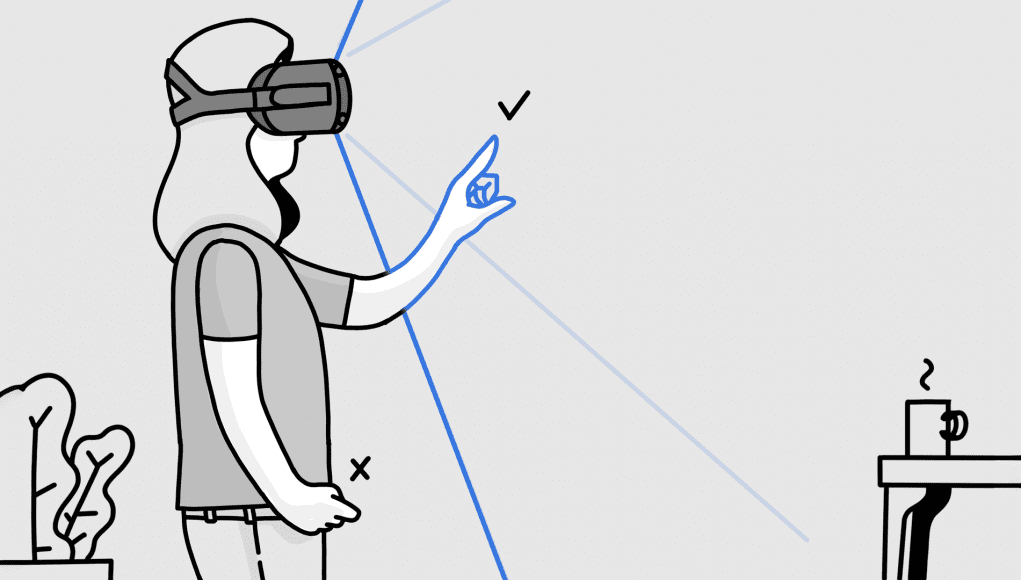
Hand tracking in Quest was developed as a experimental feature at the end of 2019. Meanwhile, the company posted a fresh developer documentation, which outlines best practices for working within the constraints of Quest hand-tracking.
Hand tracking Quest brings many advantages, among which ease of use. And even though Oculus is the first step towards this feature is quite durable, there are still limitations in terms of accuracy, delay, detect poses and coverage tracking. To help developers work better within the constraints of the system, in the new section of the documentation for developers Oculus, entitled “Designing for Hands” offers practical advice and recommendations.
“In these manuals you will find interaction, components and best practices that we checked out by researching, testing and designing by hand. We also included the principles that guided our process,” says the document. “This information is in any case not exhaustive, but should serve as a good starting point, so you can build on what we have learned so far. We hope this will help you to create an experience that will push the boundaries of what hands can do in virtual reality”.
The document noted the problems associated with space, and developers are reminded: “remember, hands are not controllers”:
There are some difficulties that arise when developing experiences for hands. Thanks to sci-Fi movies and TV shows people exaggerate expectations that may make hands to virtual reality. But even to expect that your virtual hands will work just like your real hands, currently unrealistic for several reasons.
- There are technological limitations such as a limited amount of tracking, and problems with the occlusion.
- Virtual objects do not provide tactile feedback, which we rely when interacting with real objects
- The choice of hand gestures that activate the system without accidental triggers can be difficult, because the hands form all sorts of postures in the course of ordinary conversation.
You can find the solutions we found for some of these problems, in the section “Best practices.”
[…]
Very tempting just to adapt the existing interaction with input devices such as touch controller and apply them for hand tracking. But this process will limit you already mapped the area and could cause interaction which is better with controllers, but this overlooks the advantage of hands.
Instead, focus on the unique strengths of hands as input and remember about the specific limitations of current technology to search for new interactions of the hand with the carriers. For example, one question we asked was how to provide feedback in the absence of tactility. The answer led to a new selection method, which then opened the way for entirely new three-dimensional components.
Still early, and much remains to be discovered. We hope that you found the solution, send us all to incredible new possibilities.
The section “Cooperation” of the document proposes some of the most practical advice about how developers should consider providing users with the ability to interact with the virtual world using hand tracking.
A clear distinction is made between absolute and relative interactions; the first significant objects were directly related to the user and controlled by the 1:1, and the latter dealt with how to control objects at a distance of discrete methods, such as the rotation of an object around a single axis.
In the section “user interface Components” contains concrete proposals on how to operate items such as buttons and menus, and how their size should correspond to the accuracy of the tracking Quest. There are also several examples of more complex front-end modules such as toggle switches, radial selectors and lists scroll.
Oculus says that they still do not accept apps for tracking hands in Quest. In the future they plan to move from manual tracking to experiment full function, and when they do, they will open the door to applications that use this feature. The company has not given any indication of when it will happen, but there is every chance to see it already in 2020.
Source








